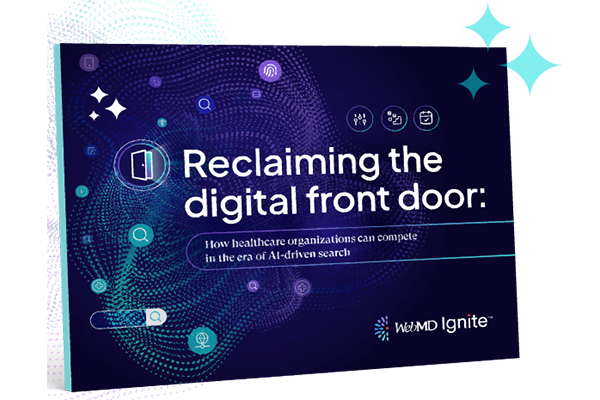Editor's Note: This blog was published prior to the transition to WebMD Ignite.
While the impacts of the COVID-19 pandemic are still ongoing, we’re now developing a clearer picture of the challenges faced in certain areas of our healthcare system and what that means for healthcare organizations going forward.
In particular, the COVID-19 pandemic caused a once-in-a-generation disruption to elective procedures. This has impacted demand for surgeries, care delivery, profitability, and the way in which hospitals engage with their patients.
Recently, Mercury Healthcare, which is now a part of WebMD Provider Services, shared new proprietary research in a webinar hosted by Becker’s Hospital Review, delivering a data-driven look at the effects of the pandemic on health systems nationwide. The webinar, Adjusting to the New Realities of Elective Procedure Care, featured Dr. John Whyte, Chief Medical Officer for WebMD, and Emmett Gordon, senior data scientist for Mercury Healthcare, and summarized the analysis from 340 million visits at 56 health systems from 2019 to 2021.
Here are three key findings from the research.
1. There were large shifts in surgical care
Total visit volume increased by 9% from 2019 to 2021, despite the initial volume drop during the “shut down” phase of the pandemic. However, this recovery was not seen across all types of care.
For example, inpatient elective procedure volume in 2021 saw a 39% decrease from 2019. That decline has persisted despite overall visit volume recovery. Within the inpatient setting, joint replacements saw the most significant decline. These procedures represented 51% of elective inpatient surgeries in 2019, but saw a 65% decline over the course of the pandemic.
Meanwhile, a 6X increase in outpatient hip replacements was seen in the span of only two years with 54% of these procedures performed in an outpatient setting in 2021, compared to just 9% before the pandemic. “This is a large shift that’s going to have a lasting impact on hospital systems and patients alike,” Gordon said.
2. There is pent-up demand for specific elective procedures
The study used a set of example procedures (within the joint replacement, cardiology, gynecology, endocrinology, and spine procedural areas) to better understand care shifts and demand trends. The data allowed the Mercury Healthcare team to plot out the procedures on a continuum of volume growth and care shifts and then determine the potential opportunities for specific procedures – falling into the categories of “capture”, “maintain” or “adapt.”
Capture
Surgeries that have not returned to expected volumes, including Coronary Artery Bypass Graft (CABG), thyroidectomy and spinal fusion demonstrate pent-up demand. As these services come back online, a “capture” strategy can remind patients that getting the right care is both safe and effective.
Maintain
Volume for these procedures, including hysterectomy, shoulder repair, and laminectomy, is above return-to-growth levels. To “maintain,” health systems should ensure new patients are still able to access these procedures while driving volume to those with higher pent-up demand.
Adapt
High pent-up demand exists for procedures in new care settings, including knee and hip replacement. Health systems can “adapt” by preparing operationally for higher outpatient surgical volume, and educating patients on new advancements that make care more efficient.
Gordon emphasized that this framework represented national trends and that individual markets will vary. However, he recommended that health systems do this type of analysis on their own data.

A slide from Mercury Healthcare’s webinar Adjusting to the New Realities of Elective Procedure Care
3. Profitability will vary by procedure and setting
Gordon noted that outpatient knee replacements reimburse 41% less than inpatient, and now nearly 80% of those procedures are being done in an outpatient setting.
However, same-day knee replacements can be far more efficient. “Health systems that can meet pent-up demand with capacity in these new settings will thrive,” he added.
Looking forward
Each of these findings has implications for your health system in terms of their marketing, strategy and patient experience.
Gordon recommended leveraging the power of predictive analytics to help capture pent-up demand, noting that Mercury Healthcare has a suite of over 250 clinical propensity models that can show when patients are at the highest risk for having certain surgeries. “From then on, it’s just about talking to them in an effective way and understanding the kind of audience that you are talking to and how they might respond to different sorts of messaging,” he added.
As Dr. Whyte noted, this shift in where care is being delivered provides an opportunity for health systems to engage effectively with consumers and patients to meet them where they are.
You can watch the full webinar here.




